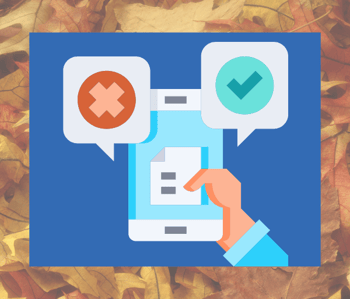Cybersecurity 101
Before we dive into the new scams we need to try to avoid falling for, we will take a step back to Cybersecurity 101 and know your cyber basics. What is Cybersecurity? It is the art of protecting networks, devices, and data from unlawful access or criminal use, and providing confidentiality, integrity, and availability of information.
Think Before You Click: Do not click on a link in an email if it looks off to you. It could be an attempt to get sensitive information or install malware.
Update Your Software: Do not delay – if you see a software update notification, act promptly or turn on automatic updates.
Use Strong Passwords: This should be a given by now, use passwords that are long, unique, and randomly generated if you can. Or even use a password manager to encrypt passwords to secure them for you.
Multi-Factor Authentication: Have a layered approach to secure your online accounts. A Multi-Factor Authentication (MFA) can provide a combination of two or more authenticators to verify your identity before the service grants you access to protect your accounts and the data they contain.
Three Scams to Avoid Falling for this Season
QR Codes provide touchless options for payment, information, business cards, restaurant menus, and more. As the popularity continues to increase, cybercriminals are taking advantage of the new craze. Scammers are leading to fake payment screens or can be used to infect devices with malware. They may also be used to dupe users into downloading counterfeit Cryptocurrency wallets. They can be created quickly and easily. If you trust the source that the QR Code is promoting, then it may be safe to use. Avoid using or scanning codes that may be found in parking lots or may be posted in an unsolicited email.
Mobile Payment Apps are being used by more consumers every day for online banking, making payments, and shopping. Since these activities require users to provide sensitive personal information such as their names, account numbers, email addresses, and passwords, it is important to weigh the perceived benefits and potential risks associated with mobile payments and banking. The convenience of mobile payment apps has changed the way we make purchases. Scammers may send fake text messages where it looks like it’s coming from the payment apps asking to enter private account information or click a link. If someone asks you to send money, make sure you know the person and reach out directly to them and verify the request before doing so.
One Time Password (OTP) Bots are used more frequently by cybercriminals due to the increase in multi-factor authentication (MFA) use. Attackers will use programmed bots to call up unsuspecting consumers and trick them into divulging their two-factor authentication codes. They may also send OTP messages by a legitimate company except it was sent because someone else was trying to log in to your account. Be aware of these codes and make sure you do not enter them or authorize any changes to your accounts.
See Yourself in Cyber
Cybersecurity Awareness Month’s focus was to spread awareness about Seeing Yourself in Cyber. Seeing yourself as part of a bigger solution in promoting safer cyber hygiene is important for the future.
For individuals and families, see yourself taking action to stay safe online by enabling basic cyber hygiene practices like updating your software, thinking before you click, setting up good strong passwords or a password keeper, and enabling MFA on all your sensitive accounts.
As a partner in the cybersecurity industry, we see ourselves as part of the solution by putting operational procedures into place, educating our employees and health centers we serve on the risks of cyber criminals, proactively implementing change and updates where needed, and most importantly always practicing good cyber hygiene.
Resources:
Cybersecurity and Infrastructure Security Agency
OSIS Webinar Series: Insight into Basic Data Security and Resources
Breach Secure Now
